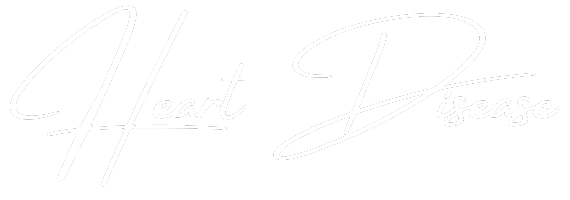
Heart disease doesn’t only affect older adults. Many people in their 30s already show risk factors. Obesity, high blood pressure, and smoking habits begin early. Poor diet and stress levels increase the burden. Routine checkups often ignore cardiovascular health in younger patients. That leads to late diagnosis. Silent plaque buildup starts in the 20s for many individuals. It continues unnoticed for years. Chest pain isn’t always present. Some only discover problems after a sudden cardiac event. Early screening is rare unless family history is strong. The damage by then is often permanent.
Chest pain isn’t always present
Many people think heart disease always causes chest pain. That’s not accurate in many cases. Especially in women, symptoms can be different. Shortness of breath, fatigue, and nausea may appear first. Some people feel only mild discomfort in the jaw or back. These signs are often mistaken for indigestion or anxiety. They come and go unpredictably. Pain might never be sharp or dramatic. Some heart attacks are completely silent. Lack of pain delays medical attention. Patients dismiss symptoms as unimportant. That allows more damage to occur before help arrives.
Heart disease can develop even with normal cholesterol levels
Normal cholesterol doesn’t guarantee healthy arteries. People with good numbers can still have plaque buildup. Inflammation also contributes to arterial damage. Blood sugar spikes and smoking affect vessel walls directly. Cholesterol is only one part of the equation. Some have genetically dense LDL particles that still harm arteries. These won’t show in routine tests. Coronary calcium scans reveal more accurate risk in some cases. Lifestyle matters even with good lab results. Normal numbers shouldn’t give a false sense of security. Risk exists beyond cholesterol alone.
Women and men experience symptoms differently
Symptoms don’t appear the same in everyone. Men often feel chest pressure during heart events. Women may not. They report dizziness, fatigue, or neck pain more frequently. Their signs are less obvious. Medical systems sometimes overlook heart disease in female patients. That delay can worsen outcomes. Research now confirms gender differences in symptom presentation. Even diagnostic tools show bias. Women with heart issues often receive fewer referrals to specialists. Awareness is still catching up. These differences must be addressed during assessment.
Exercise doesn’t erase all cardiovascular risk
Regular activity supports heart health. But it doesn’t cancel out other risk factors. A person can exercise daily and still develop disease. Smoking, stress, poor sleep, and genetics all influence risk. Plaque may still form despite fitness. Some athletes have died from undiagnosed heart conditions. Their outward appearance gave a false impression. Exercise improves odds but isn’t a guarantee. Balanced health involves more than one habit. Risk should be assessed even in active individuals.
A healthy weight doesn’t mean zero risk
Thin people also suffer from heart attacks. Body size isn’t the only variable. Some have high blood pressure despite normal weight. Others show metabolic syndrome with no obesity. Visceral fat around organs matters more than scale numbers. Lean individuals sometimes eat poorly. They may avoid doctors due to false reassurance. Heart disease affects people across weight categories. Slim does not mean safe. Risk must be evaluated with full context.
Family history raises baseline risk regardless of lifestyle
Genetics influence how your body handles inflammation, lipids, and stress. Family history increases baseline vulnerability. Even with good habits, risk remains elevated. You can delay onset, but not remove all danger. First-degree relatives with early heart disease are a major red flag. Their experience predicts your risk more than labs alone. Genetic testing may offer insight, but isn’t always accessible. Prevention is still important. But it should be paired with close monitoring. Some risks are inherited, not earned.
Blood pressure fluctuates and doesn’t always show symptoms
High blood pressure doesn’t always cause headaches or nosebleeds. It can remain silent for years. People feel normal while damage builds. Arteries stiffen, the heart strains, organs slowly lose resilience. Routine measurements are the only reliable way to catch it. Home monitors help track real numbers. Clinic readings can vary with stress. One normal reading doesn’t mean everything is fine. Patterns matter more than snapshots. Long-term pressure elevation drives heart disease silently.
Not all heart attacks come from complete blockages
A heart attack doesn’t always involve 100% blockage. Some occur with moderate narrowing and sudden clot formation. Plaque rupture causes local inflammation. That triggers clotting at the rupture site. Even small plaques can become unstable. Angiograms sometimes reveal only partial obstruction. Yet damage still happens. That’s why stable-looking arteries aren’t always safe. The biology behind plaques matters more than the size. Mild disease can still lead to events.
Stress has physical effects on the heart
Stress isn’t just emotional. It causes hormonal changes that impact blood vessels. Cortisol and adrenaline affect blood pressure and heart rate. Chronic stress inflames the inner vessel lining. It also encourages poor lifestyle decisions. Sleep gets worse. Exercise drops. Diet suffers. These habits compound the direct biological effects. Mental strain can trigger heart events. Stress-related cardiomyopathy is a real condition. The heart’s structure changes temporarily due to emotional shock. Recovery is possible, but damage can remain.
You can still have a heart event with clear arteries
Some heart attacks occur without blocked vessels. This is called MINOCA. It stands for myocardial infarction with non-obstructive coronary arteries. In these cases, spasms or clots cause the event. Imaging may look normal. But symptoms and blood markers confirm the problem. Women are more likely to have MINOCA. Treatment is different from typical heart attacks. These cases are underdiagnosed. Normal angiograms don’t always mean the heart is healthy. Function and inflammation must also be assessed.
